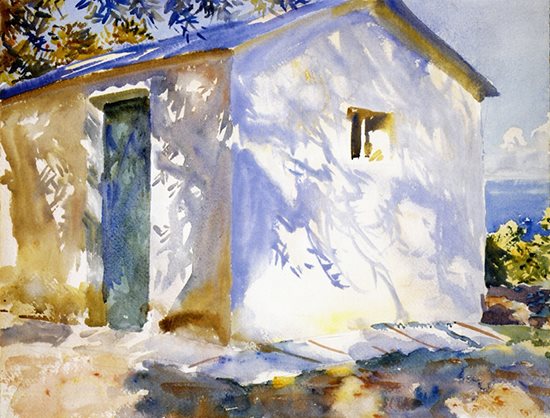Doubt of a Shadow

Oil Painting Elements–The Shadow
Shadows are very important in defining the form of any object, but they are often the least understood and most difficult element to master in painting. Most importantly, shadows must have transparency, or light in them, to be effective. Going by the old rule, “warm light casts cool shadows; cool light casts warm shadows”, is a good start but doesn’t fit every situation and may be dangerous to rely on. It is far more accurately stated this way: “warm light generally casts cooler shadows and cool light generally casts warmer shadows. What is important is seeing accurately and understanding what is before us and why.
 |
||
| Fontainebleau Forest by Claude Monet, 1865. |
The color and temperature of cast shadows are influenced largely by four things: the color of the light source, the color of the surface that the illuminated object is sitting upon, the color of any light cast into the shadow from a secondary source, and any light reflected back into the shadow from an adjacent object or surface. If, for instance, warm light is hitting an object sitting on a warm colored surface, is our shadow still going to be cool? Of course it must be, but we are talking about a small degree of coolness in that case. The accuracy of that fine distinction is critical.
Look at Fontainebleau Forest by Monet to see this principle in action and his solution to the problem. In this case, the warm sunlight is also filtered through a green canopy, which colors some of the light before it hits the ground, complicating matters. Monet’s handling of the shadows underneath the trees is very sensitive and sophisticated. There are both warms and cools!
In the watercolor, Corfu: Lights and Shadows, John Singer Sargent chose to make the shadows the main subject of the painting. Corfu is a Greek island in the Ionian sea, bathed in very warm summer light. Sargent observed both warm shadows and cool shadows on the same building, cast by the same trees.
 |
||
| Corfu: Lights and Shadows by John Singer Sargent, 1909. |
The warm shadows on the left side of the building appear to be influenced by the strong warm light reflected back up from the ground, while the cool shadows on the adjacent side are influenced more by the direct light of the sky. His task was made somewhat easier by his use of watercolor – transparency in the shadows comes with the medium. However there is only one chance to get those strokes the correct color, value and shape! Therein lies our amazement at his accomplishment.
Join us on The Artist’s Road for more tips, interesting articles and interviews with artists. Members enjoy a discount in The Artist’s Road Store where you’ll find the Impressionist Masterpieces from the Musée d’Orsay and Impressionists of the Water Coloring Book for young artists.
–John and Ann





The shadows are perfect, the contrast of colors making the painting more beautiful.
The shadows are perfect, the contrast of colors making the painting more beautiful.